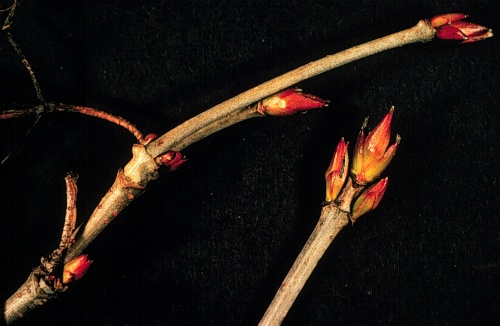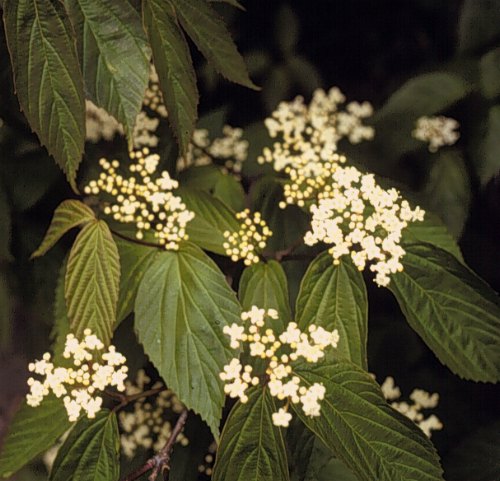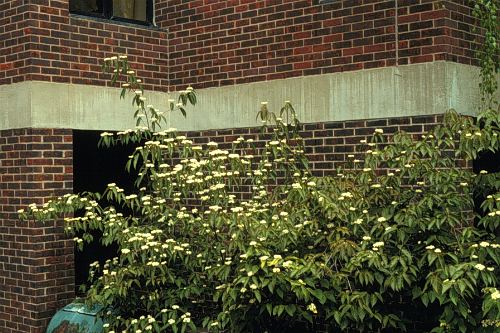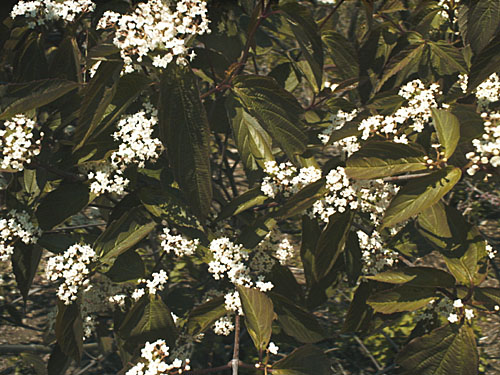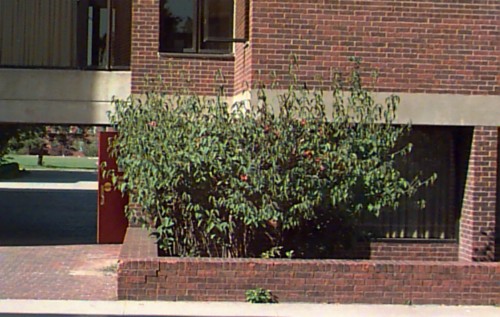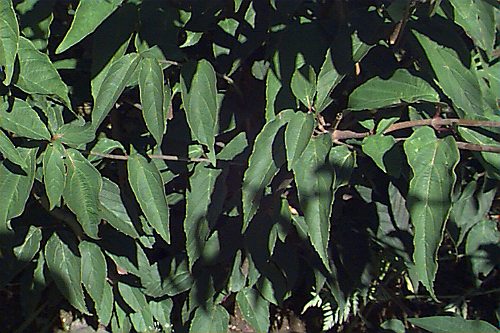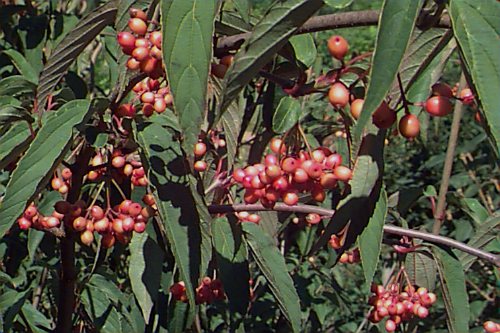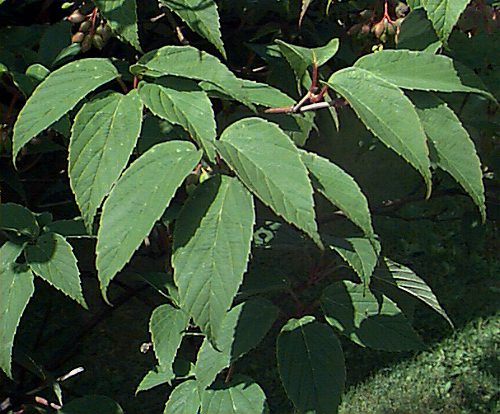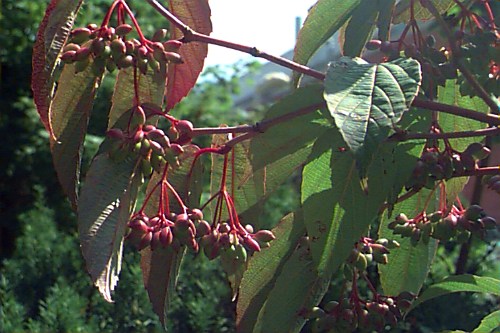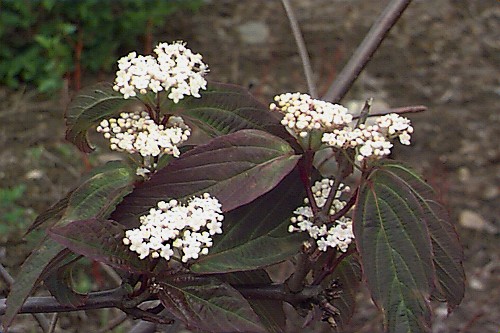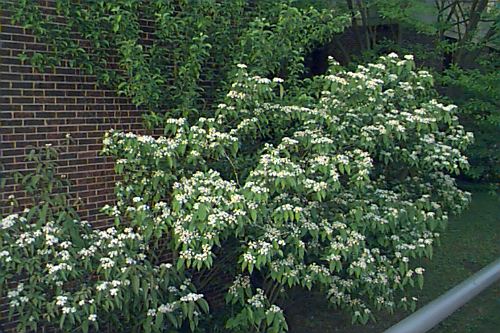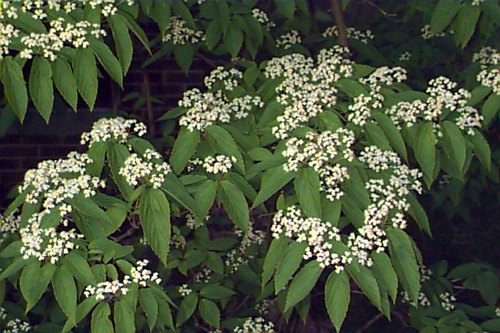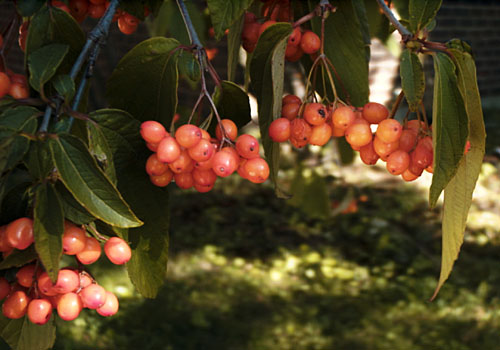Viburnum setigerum
Tea Viburnum
Caprifoliaceae
ExpandHabitat
- native to central and western China
- zone 5
Habit and Form
- a deciduous multistemmed shrub
- upright, leggy shape
- slightly, drooping branches
- 8' to 12' tall
- 5' to 8' wide
- medium texture
- slow growth rate
Summer Foliage
- deciduous simple leaves
- opposite leaf arrangement
- simple leaves with toothing
- 3" to 6" long
- wide, lanceolate leaf shape
- pubescent leaf veins and petiole
- blue-green leaf color
Autumn Foliage
- reddish fall color
- not reliable
Flowers
- white flowers
- blooms late May
- flat-topped cymes
- 1" to 2" in diameter
Fruit
- egg-shaped drupe
- reddish-orange to orange
- matures in October
- very showy
Bark
- gray and fissuring
- glabrous stems
- stout
- lenticels
- two types of buds; vegetative and reproductive
- both types of buds are imbricate
- green with red edges
Culture
- prefers well-drained, mildly acidic soil
- full sun to partial shade
- flowers on new wood
Landscape Use
- shrub borders
- screen
- mass plantings
- for flower effect
- for fruiting effect
Liabilities
- bacterial leaf spot
- nematodes
ID Features
- small, orange, egg-shaped drupe
- deciduous leaves in an opposite arrangement
- simple leaves with toothing
- green buds with red edges
- branches tend to droop due to fruit weight
Propagation
- by cuttings
Cultivars/Varieties
'Aurantiacum' - This old selection is probably more common than the species due to its unusual, bright orange pendant fruit. Like the species, it may become leggy with age and require renewal pruning.
